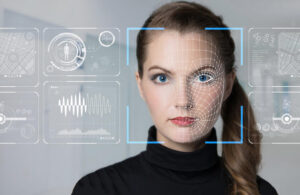
Fingerprint is still the primary biometric used in readers and other access control devices. However, certain limitations have prompted users to look for the possibility of adding other biometrics in addition to fingerprint. Face, then, becomes a viable solution.
The use of fingerprint as the dominant biometric for access control has been solidly established. Citing a report by Yale, SmartMetric said that fingerprint-based biometrics dominated the US$4.45 billion global biometrics market in 2016 with an estimated 91 percent market share. The study states that the fingerprint biometrics market in 2016 was valued at $4.1 billion, versus other biometric hardware solutions which collectively had an estimated $250 million market share.
Another report by Technavio, meanwhile, said that the global fingerprint biometrics market will grow at a compound annual growth rate of 12 percent between 2017 and 2021. “The increasing adoption of fingerprint biometrics in the healthcare sector is one of the key factors will drive the growth of this market,” the report said. “APAC will be the major revenue contributor to this global market by the end of the predicted period. This is mainly due to the increasing use of fingerprint biometrics by the governments of several countries such as India since it helps them monitor the attendance of employees, rationing, and ensure border control.”
However, while widespread, fingerprint-based solutions are found to have certain limitations.
Customers understanding and preferring the added security and convenience which only biometrics provides today may have been disappointed in the past with the unsatisfactory reliability of fingerprint recognition technology. For instance, the nature of the coal mining business or building construction leads to workers having poor-quality fingerprints. It’s highly unlikely a unimodal fingerprint reader will recognize the employees’ fingerprints. Recently some vendors have introduced new technology, supposedly assuring near-perfect fingerprint recognition. But regardless how powerful optics or matching algorithms the vendor develops, still there will remain a percentage of the population whose fingerprints simply cannot be read due to either their age, skin color or the ‘surface condition’ of their fingers – that is, wrinkled, cut, scraped or covered by grime/makeup.
Stories on fingerprint devices failing to authenticate users are numerous. In one instance, for example, The Indian Express reported that several fair price shops (FPS) in New Delhi saw beneficiaries return home empty-handed as either the electronic point of sale devices didn’t work or they failed to recognize their fingerprints.

Turning to fingerprint-face readers
This, then, has led users to consider multimodal biometric solutions combining fingerprint and other biometrics. By incorporating multiple biometric sensors – that is, fingerprint, face, palm vein, iris and fingerprint-vein – into one single device, a greater percentage of users will successfully enroll and authenticate.
Some fingerprints are very difficult to read. Old and worn-out fingerprints can be very unreliable. Facial recognition is sometimes better but sometimes can also have difficulty reading, so multimode increases reliability.
Against this backdrop, demand for fingerprint-face readers has picked up due to their various advantages. When considering cost, face recognition is the next best alternative to fingerprint recognition, since face recognition is ‘touch-less.’ With face recognition there’s no concern for dirt, wrinkles and hygiene since the face reader is making measurements which distinguish facial features. The condition of the face skin is irrelevant. With the latest face recognition technology, enrollment is as simple as supplying an image file so the user can enroll ‘remotely.’ For the above stated reasons, face recognition is often a better-suited biometric technology.
The accuracies in both fingerprint and face technology are guaranteed but face technology is contactless, suitable for industries that do not want the staff to be touching the machine due to reasons such as the nature of the job or to sustain the robustness of the machine.

Vertical markets that can especially benefit from fingerprint-face readers included, financial, healthcare, automotive, and manufacturing. We receive a lot of orders from industries that want contactless yet accurate verification and multimodal readers can accomplish that.
As for the future, the growth potential of fingerprint-facial readers is huge. Just look at your smartphone. Yesterday (and today’s) smartphones all seemingly have fingerprint sensors. Now all the talk is about using face recognition to access your smartphone. Hundreds of millions of smartphone users around the world access their phone with biometrics. This trend will continue growing and eventually will become the norm in the commercial space.
Adapted from a&s Magazine



































































